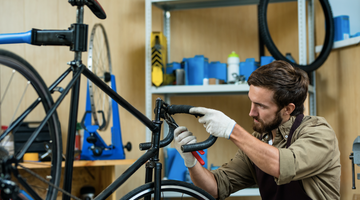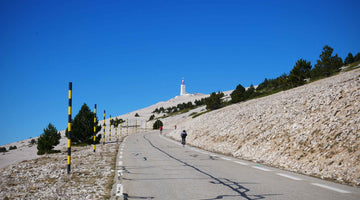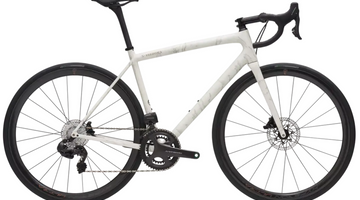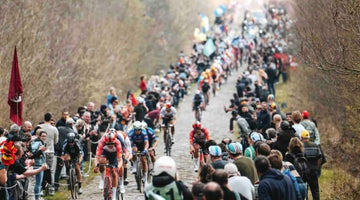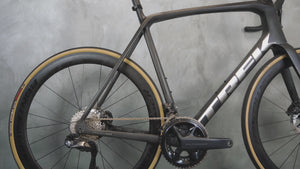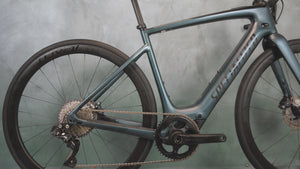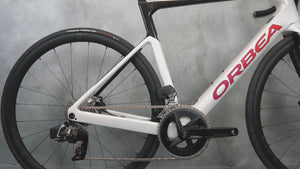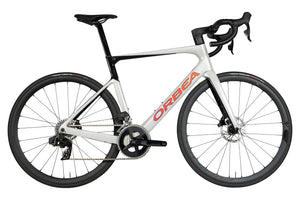Buying a second-hand road bike: the ultimate guide
In this Article
Published November 8, 2021 (last updated February 24, 2023)
Many of you have asked us, after publishing the buying guide for second hand MTBs and the second hand gravel bikes, this guide was the missing piece. Here it is!
Whether you want to compete or just go out on a Sunday with friends, road bikes allow you to live the passion of cycling at any level. Have you ever wondered where the road outside your door goes? It's time to find the answer! The problem is that the world of road bikes can sometimes be confusing, obscure or, at worst, snobby. If you're a novice, it can be difficult to choose the right bike.
That's where we come in. The Cyclist House has a wide range of certified pre-owned road bikes that will appeal to beginners as well as seasoned racers. Don't break the bank and buy a top-of-the-line bike today, available right away and with no surprises upon receipt.
Before you get started, be sure to answer these questions five questions:
Define a goal
Be clear about the purpose of your rides - try to be honest. Is it competitive racing, or a more leisurely ride to improve your heart rate? Are you looking for a bike to pedal to and from work, or to get out on the weekends when the weather is nice? Or maybe you're interested in long rides and gravel roads, in which case a gravel bike might be a better choice?
Road bikes allow cyclists to cover more distance at higher speeds. The tires are narrow and smooth, making them more efficient. The bikes are lightweight, which allows for faster climbing, and most road bikes improve aerodynamics - again, for speed. However, if you have a lot of trails around your home, you may prefer a gravel bike, which is similar to a road bike with wider, knobby tires, more relaxed geometry and other comfort features. If you're not comfortable with low-profile handlebars, a mountain bike (MTB) might be a better choice.
In the world of road bikes, there are three main categories:
Multipurpose racing bike
A modern all-around race bike is the type of bike you often see in the Alps during the Tour de France, which is why some people call them climber bikes or overall bikes. It's a bike that aims to balance lightness, stiffness, comfort (sometimes), and often aerodynamics - all in the name of covering varied roads as efficiently as possible.
The Specialized Tarmac is a versatile model par excellence.
You can find our selection of "all rounder" bikes by following this link.
Aero racing bike (for "aerodynamic")
Sharing the same handling and fit as the all-around race bike, this road bike gains in aerodynamics. These bikes are usually the first choice for flat terrain, and are a good option for more experienced riders. As most all-purpose race bikes have become more aerodynamic, the aerodynamic race bike has lost some of its appeal.
You can find our selection of bikes aero by following this link.
Endurance bike
The modern endurance road bike, sometimes called Gran Fondo bike, aims to take the sporty nature of the all-around racing bike and make it more comfortable. The fit is more relaxed, the ride is often smoother, and the steering is often less responsive. These are road bikes for the general public or for cyclists who like to spend time in the saddle: several hours at a time, or even several days for the most dedicated!
You can find our selection of Gran Fando bikes by following this link.
Know your size
Cycling is one of the few (the only?) sports that can be done sitting down. A joy for the lazy! However, this means spending hours in the same position. Gone are the days when a road bike was uncomfortable from the first few meters - you should be able to pedal without any discomfort. But a bike that doesn't fit or is poorly configured will cause discomfort and you may even injure yourself. That's why it's important to make sure the bike fits you.
Most road bikes have a numerical size, based on the length of the seat tube. The classic size for road bikes is "square", meaning that the top tube length is equal to the seat tube length. This is less common these days, and some manufacturers have even adopted lettered size ranges (S, M, L).
Regardless of the unit, top tube length is the fundamental measurement to consider when choosing a bike size.
If you already have a bike, it's certainly worth referring to its size and fit when shopping. And here at The Cyclist Houseyou can always refer to our size guide.
Please note that each brand has its own specific system. A size 54 Specialized will not have exactly the same measurements as a size 54 Trek. The best thing to do is to have your measurements taken at a bike shop, which will give you the optimal measurement for your size.reachand thestack of your future machine.
If this vocabulary is gibberish for you, you can refer to our article dedicated to the subject: How to choose your bike size.
|
Frame size |
Frame size |
Minimum rider size |
Maximum rider size |
|
48 cm |
XS |
130 cm |
158 cm |
|
50 cm |
S |
158 cm |
168 cm |
|
52 cm |
S / M |
168 cm |
173 cm |
|
54 cm |
M |
173 cm |
178 cm |
|
56 cm |
L |
178 cm |
185 cm |
| 58 cm | L / XL | 185 cm | 192 cm |
| 60 cm | XL | 192 cm | 198 cm |
Set a budget
There's no secret: spending more will get you a better performing, lighter, probably more aerodynamic, more durable and maybe even more comfortable bike. However, there are exceptions to this rule. When setting your budget, there are some key things to consider.
Frame material
Most road bikes you will find on the market will have an aluminum or carbon fiber frame.
For a more modest budget, an aluminum or steel frame is a good option. A larger budget will open the doors to carbon fiber. The important thing to remember is that the exact type of material used is far less important than how it is used. A well-designed aluminum frame can be much more enjoyable to use than a poorly designed carbon frame.
Brakes
The question of rim brakes versus disc brakes is one of the most hotly contested debates among cyclists. Like it or not, the bike industry has made disc brakes the standard for road bikes. This means that unless you have a good reason to opt for rim brakes, it's best to go with the latest technology. You'll benefit in terms of performance and resale value.
However, rim brakes are still the lightest option and will give you a lighter bike for the same price. So it may be worth considering if you are on a tight budget, ride mostly flat, and are looking for an affordable way to get a lighter bike. If you're looking for more in-depth information on the subject of brakes, check out our guide to road bike brakes.
The wheels
After the frame, it's probably the wheels (and tires) that will make the biggest difference in your riding. This is because the wheels and tires represent rotating weight and therefore have a significant effect on how easily and quickly you can accelerate. The wheels and tires are also the first points of contact with the wind and the road surface.
Carbon wheels are one of the most popular aftermarket upgrade options for road bikes. Carbon fiber is exceptionally light, stiff and strong. Due to carbon's advantageous strength-to-weight ratio, rims can be deeper, wider and more aerodynamic without significant weight loss. The stiffer feel of carbon rims can also sometimes improve the cornering and acceleration of your bike.
Despite the advantages of carbon, some cyclists may prefer traditional aluminum wheels. Aluminum is less expensive and, in some cases, stronger and more impact resistant.
When purchasing a used bike, it is always important to carefully inspect the wheels for cracks or structural damage. The Cyclist House Inspect all of the wheels on your used road bikes to make sure they are in perfect condition.
The components
Components are all the parts of a bike that are used to shift gears or brake - Cassettechain, crankset, derailleurs, shifters and brake calipers. The two most common component manufacturers are Shimano and SRAM. You may also come across a bike with Campagnolo components, which are rarer but have a loyal following among discerning cyclists.
You can find a detailed comparison in our article Shimano vs SRAM.
As a general rule, the more you spend, the more gears the bike will have and the easier they will be to shift. And like most things in cycling, there is an inverse relationship between component weight and price.
It's worth noting that the frame and wheels will play a bigger role in the appreciation of the bike than the components attached to it. If you have a choice, invest in a better frame and wheels before opting for better derailleurs and cassettes.
If you're still in doubt, check out : How much to spend on your first bike?
Search for the perfect bike
After defining your goal, budget and size, try to identify three or four models that match what you are looking for. These will serve as the basis for your search. The best time to start looking for a used bike is in the fall, when brands introduce the next year's models and many cyclists are looking to part with their old bikes.
Buy a bike from a trusted platform
When looking for a bike, you can visit your local bike shop or search the classified ads. When buying directly from a private individual, never pay without seeing and trying the bike. This can often be a hassle, especially if the bike you are interested in is not in your area. If you inspect the bike yourself, be sure to check that :
- The frame does not have any cracks (rust or scratches are usually superficial and only affect the aesthetics)
- The chain and the Cassette are not rusted or stretched (budget to replace them if they are)
- Brakes are working and pads are not worn
- Shifting gears is easy
- Bearings work and move freely without squeaking (Headsetpedals and wheels)
- Tires are inflated
If you prefer the assurance of a professional seller, prefer specialized sites such as The Cyclist House
🤑 Prices up to 70% cheaper than new
🧑🔧 Bikes serviced and tuned-up by professional mechanics in our warehouse in France
🏅 One year warranty on frame and components
📨 Delivery in 3 to 5 days throughout Europe
👌 30 days trial period, satisfied or refunded
To know more about the reconditioning by The Cyclist Houseclick here: Certified second hand : the purchase in all serenity
So don't wait any longer and with these tips, you will ride the bike of your dreams as soon as possible. Have a good ride!







